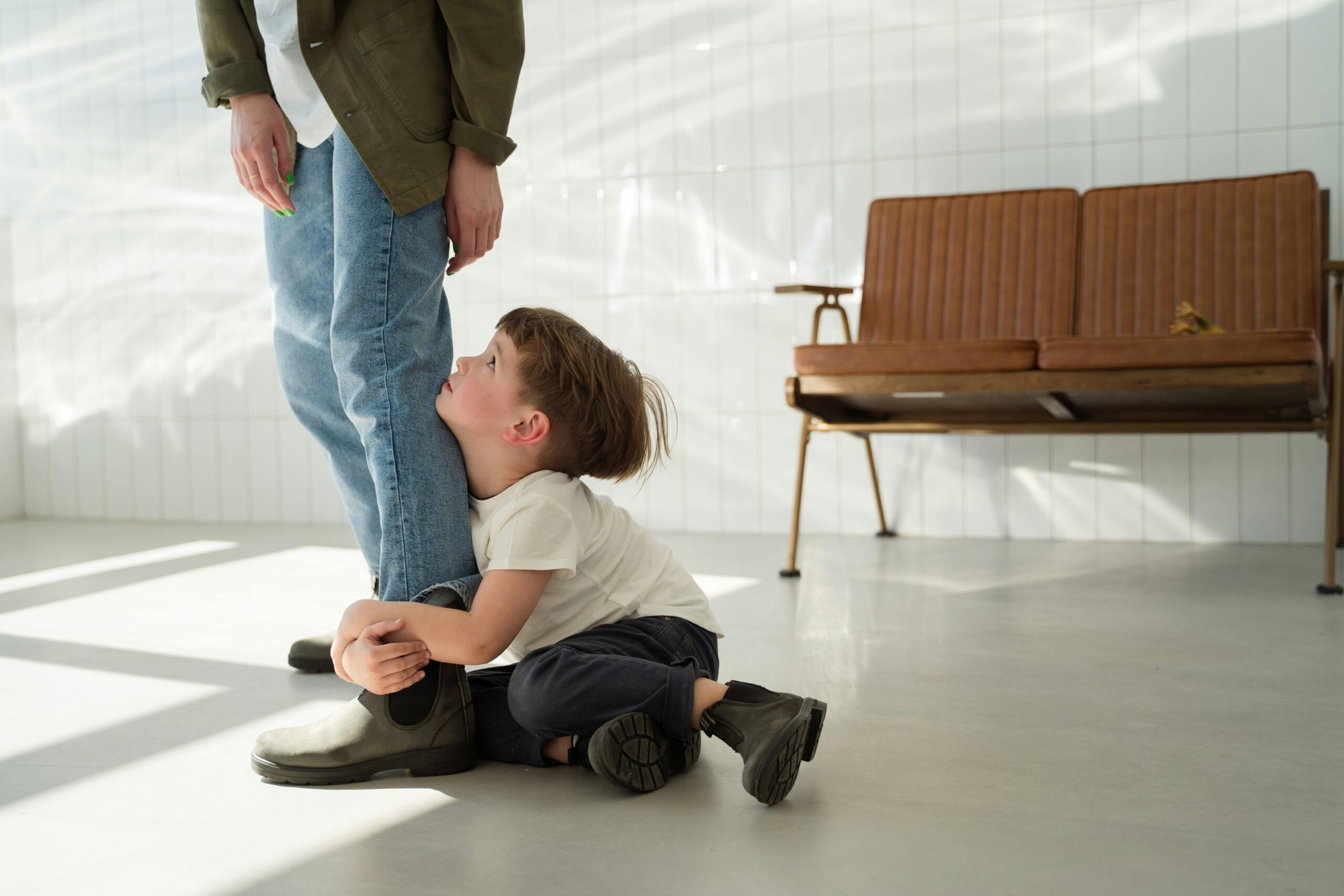How to Deal with Challenging Behaviour in Children — Without Losing Your Cool

When your child throws, shouts, or refuses to listen, your body reacts before your brain can. Your heart rate climbs, your jaw tightens, and suddenly you’re caught in a cycle you never meant to start.
The truth is: you’re not a bad parent — you’re a human parent.
And staying calm isn’t about pretending everything’s fine. It’s about creating the space where change can actually happen.
Why Staying Calm Changes Everything
Children borrow our emotional state. When we lose our cool, they lose their anchor. But when we stay steady, their nervous system starts to calm too.
That’s called co-regulation, and it’s one of the strongest predictors of how quickly children settle after difficult moments (Morris et al., 2007).
Behavioural science adds another layer: calm adults can see the function behind the behaviour — what the child is trying to achieve — instead of reacting to the noise. That’s the foundation of Positive Behaviour Support (PBS) and Applied Behaviour Analysis (ABA).
Calm isn’t soft. It’s strategic. It’s the skill that makes every other strategy possible.
The Calm Moment Library
Here are three evidence-based scripts you can use in real moments, when emotions rise fast:
1. When your child refuses to do something
🗣️ “I can see you really don’t want to do this. Let’s take one breath together, then we’ll make a plan.”
2. When your child shouts or screams
🗣️ “You’re angry because things feel unfair right now. I’m listening — we’ll talk when voices are calm.”
3. When your child lashes out physically
🗣️ “I won’t let anyone get hurt. I’m going to move back so we can both feel safe.”
These are co-regulation scripts — calm words that lower arousal and teach safety through modelling. They take practice, but each calm moment builds the next.
Behaviour Map: Seeing the Pattern
| Trigger (A) | Behaviour (B) | Response (C) | Better Alternative |
|---|---|---|---|
| Told “no” | Screams | Parent shouts | Parent names emotion, waits silently |
| Asked to stop game | Throws toy | Parent removes privilege | Parent redirects with limited choices |
| Homework time | Refuses, hides | Parent argues | Parent reinforces first step (“thanks for opening your book”) |
Recognising this pattern — Antecedent → Behaviour → Consequence — is at the heart of both ABA and PBS. You can learn more about this in our guide on Positive Behaviour Support.
Name What’s Happening — Without the Judgment
Instead of, “You’re being rude,” try, “You’re upset because I said no.”
That tiny shift signals safety to your child’s brain and helps them move from the emotional to the thinking part.
🧠 Evidence: Affect labelling reduces amygdala activation, improving emotional control (Lieberman et al., 2007).
Control the Controllable — You
You can’t control every outburst, but you can decide how you model calm.
Pause. Breathe. Speak softer than your child’s volume.
If you need 20 seconds to reset, take them — that’s not avoidance; it’s leadership.
🧩 Evidence: Parents who self-regulate use more consistent discipline and see fewer child outbursts (Dix, 1991; Eisenberg et al., 1998).
Reinforce the Calm
Notice the recovery moments: the deep breath, the small effort, the second attempt.
Say, “I really liked how you stopped to think just then.”
That’s reinforcement — the behavioural engine behind long-term change.
✅ Evidence: Positive reinforcement increases desirable behaviours, especially when paired with emotional attunement (Gore et al., 2013).
A Parent’s Voice
“I used to shout back. I thought that’s what strong parents did. But when I learned to pause — to just breathe and name the feeling — my son started to calm faster. We both did.”
— Maya, parent of two
Stories like Maya’s remind us: every calm interaction teaches emotional literacy — to our children, and to ourselves.
When to Ask for Help
If your child’s behaviour feels unsafe, is worsening, or you’re noticing aggression that doesn’t ease with calm strategies, it’s time to get support.
Talk to your GP, school SENCO, or a qualified behaviour specialist. Sometimes behaviour communicates an unmet need that deserves structured support.
You can learn how this fits into your child’s plan in our guide: How to Add Behaviour Support to Your EHCP.
Free Resource: The Calm Parent Toolkit
If you’ve ever wished for a reset button before reacting, this one’s for you.
🧩 Inside the toolkit:
- 3 calm-down scripts for real-world moments
- A “Co-Regulation Map” to spot what triggers you
- A printable reflection sheet to track calm moments
👉 [Download The Calm Parent Toolkit] — instant PDF, no spam, just support.
Final Thoughts
You don’t have to be endlessly patient. You just have to be present enough to try differently.
Each calm response changes the atmosphere in your home — and ripples outward.
Because calm isn’t only good for your family — it’s good for the world.
Every time one person learns to meet anger with steadiness, the planet becomes a slightly kinder place.
That’s the quiet revolution.
And it starts in your living room.
References
Carr, E. G., et al. (2002). Positive behavior support: Evolution of an applied science. Journal of Positive Behavior Interventions, 4(1), 4–16.
Gore, N. J., et al. (2013). Defining positive behaviour support for the UK. International Journal of Positive Behavioural Support, 3(2), 14–23.
Morris, A. S., et al. (2007). The role of the family context in the development of emotion regulation. Social Development, 16(2), 361–388.
Dix, T. (1991). The affective organization of parenting: Adaptive and maladaptive processes. Psychological Bulletin, 110(1), 3–25.
Eisenberg, N., et al. (1998). Emotion-related regulation: Its conceptualization, relations to social functioning, and socialization. Child Development, 69(2), 506–517.
Lieberman, M. D., et al. (2007). Putting feelings into words: Affect labeling disrupts amygdala activity in response to affective stimuli. Psychological Science, 18(5), 421–428.